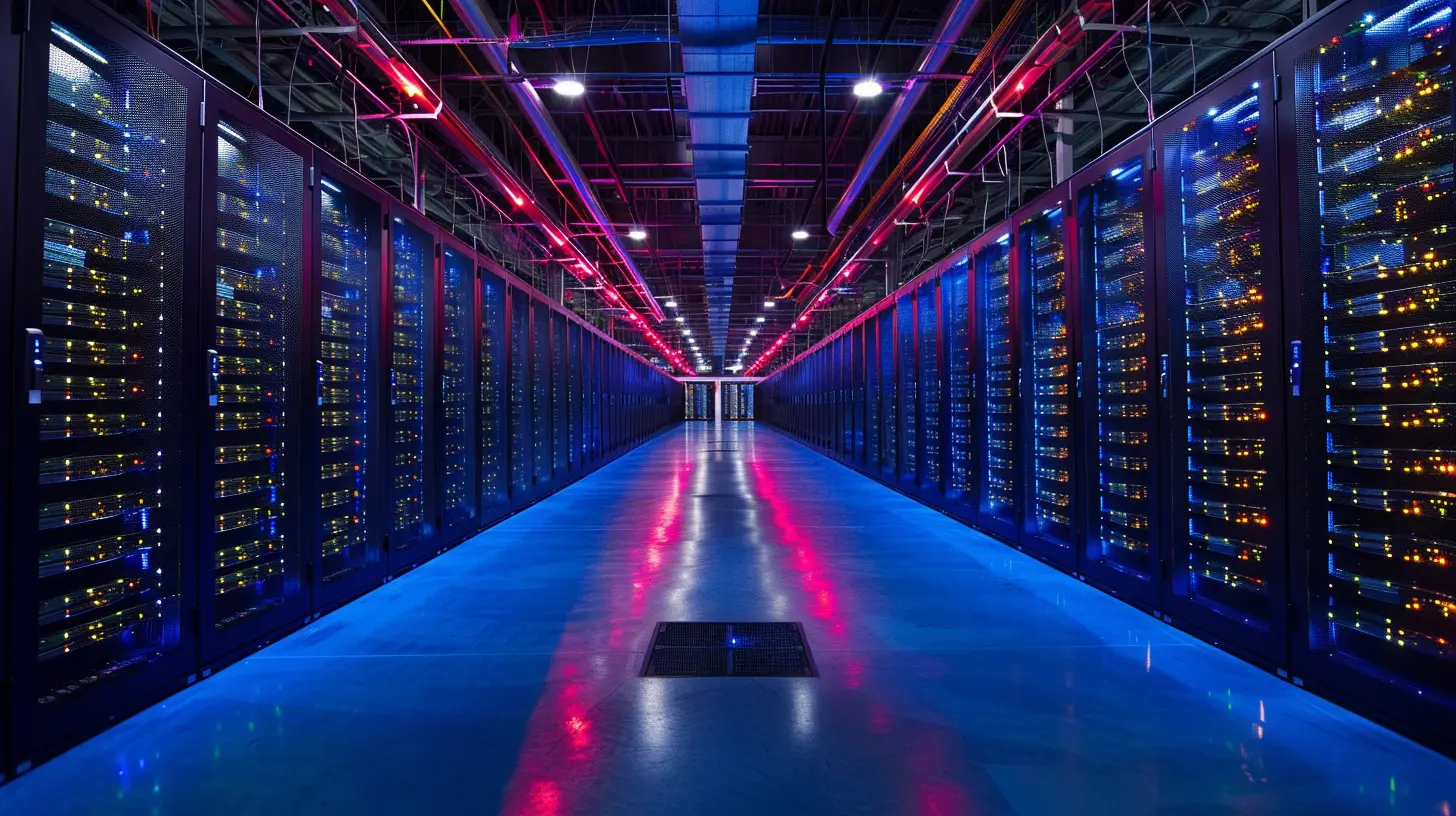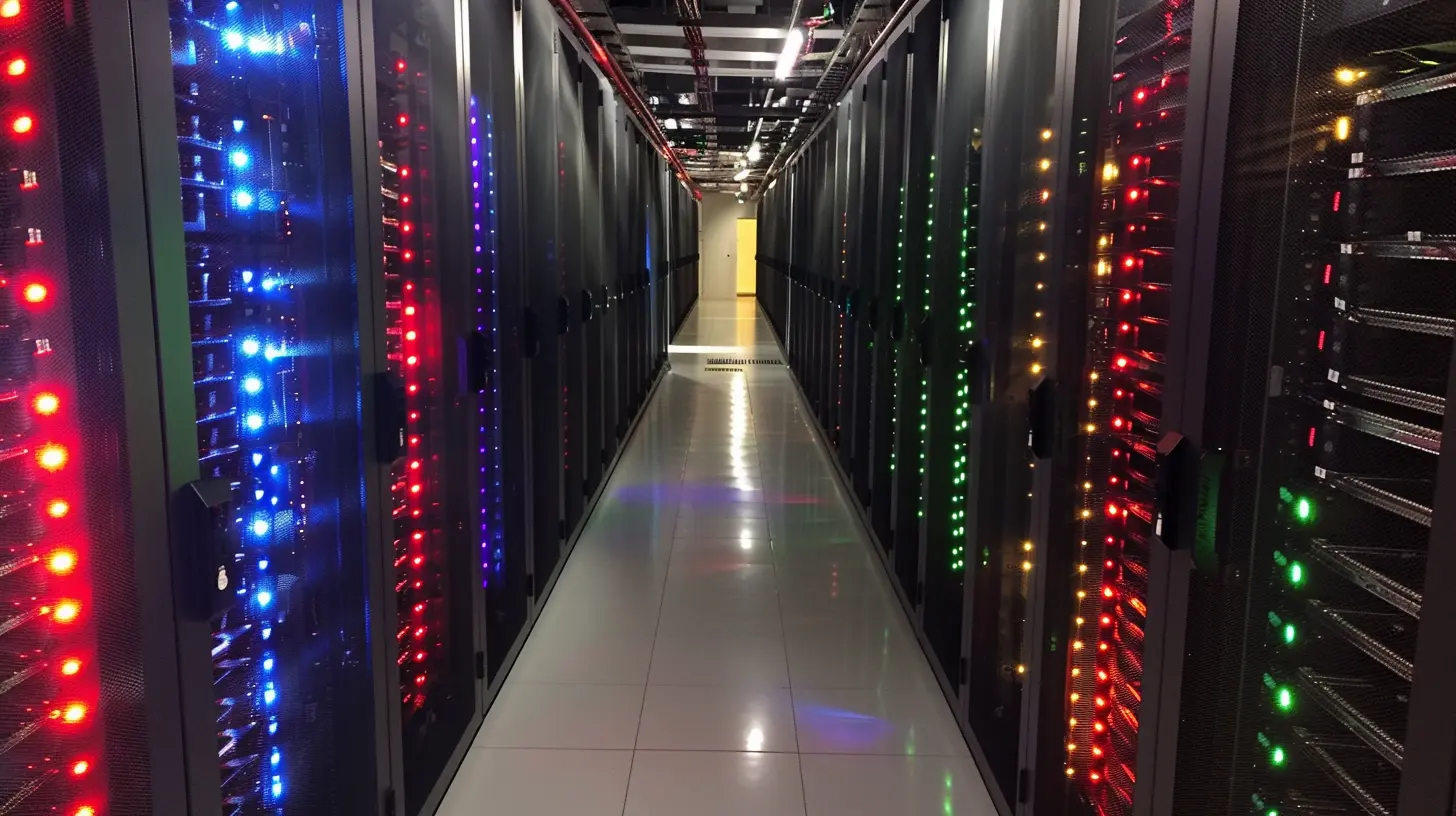The Role of Open Source Software in Data Center Innovation
4 November 2025
Ever stop and wonder what really keeps a data center running? Sure, there are racks of blinking servers, endless miles of cabling, and the unmistakable hum of machines. But beneath all that hardware? There’s a digital glue holding everything together—open source software. And let me tell you, it’s not just keeping the lights on; it’s redefining how modern data centers operate.
In a world obsessed with speed, scale, and efficiency, open source software has quietly become the unsung hero. It’s no longer just the domain of passionate coders working late into the night—it’s driving massive innovations in how data is stored, managed, and protected.
So, what exactly is the role of open source software in data center innovation? Buckle up, because we’re about to dig deep.
What Exactly Is Open Source Software?
Before we jump into data centers, let’s clear the air about what open source really means.Open source software (OSS) is code that’s freely available to use, modify, and distribute. Anyone can contribute to it. Think of it like a giant community project—only instead of building a treehouse, you're building cloud platforms, operating systems, or AI frameworks.
Some of the biggest names out there—Linux, Kubernetes, Apache, MySQL—are open source. And guess what? They're powering massive enterprise systems behind the scenes.
Why Are Data Centers Evolving?
Data centers aren’t what they used to be. Not too long ago, they were just server farms with static racks doing individual tasks. Today? They’re intelligent, scalable, and agile—able to deploy thousands of virtual machines in minutes, run complex AI models, and support millions of users in real time.This transformation hasn’t happened by accident. The surge in cloud computing, edge computing, big data, and IoT has meant traditional, monolithic data center models just don’t cut it anymore. Innovation is the name of the game, and open source is sitting right at the control panel.
How Open Source Powers Data Centers
1. Flexibility That Matches Scale
Let’s start with the big one: flexibility. Open source software in data centers means you’re not stuck with proprietary limitations. Need to tweak something to meet very specific needs? Go for it—no need to wait for a vendor’s next release.For massive data center operators like Google, Facebook (Meta), and Amazon, this level of control is crucial. They need to scale dynamically, adjust to unpredictable loads, and customize systems for optimal performance. Open source software allows that on a silver platter.
2. Cost Efficiency Without Compromise
Data centers cost a ton to run. Between hardware, cooling, networking, and licensing, the bills pile up fast. Open source cuts major costs by eliminating pricey software licensing fees.But it’s not just about saving money. You’re also not compromising on quality. Remember, some of the best minds on the planet contribute to open source projects. We're talking peer-reviewed, constantly improved code. That's like having a team of top chefs cooking your dinner... for free.
3. Community-Driven Innovation
Imagine you’re stuck solving a problem in a proprietary environment. You call support, go through tiers of hold music, maybe get a patch in a month.Now imagine you’re in an open source ecosystem. You post your issue, and within hours, developers from around the world suggest solutions. That’s the power of global collaboration. In open source, you’re never alone.
Some of the coolest innovations in networking, orchestration, and virtualization started as ideas shared on GitHub or community forums. Data center operators benefit directly, staying ahead of the curve without reinventing the wheel.
Key Open Source Tools Shaping the Modern Data Center
Let’s name-drop a bit—because tools matter.Linux: The Backbone of It All
Almost every data center server runs on some flavor of Linux. Why? Stability, security, performance, and customization. Linux is like the sturdy chassis of a race car—if it fails, nothing else can perform.Kubernetes: The Orchestra Conductor
Managing containers at scale would be chaotic without Kubernetes. It automates deployment, scaling, and operations of app containers. This tool practically transformed how software is deployed in data centers.Kubernetes, originally open-sourced by Google, now has a massive ecosystem. It’s the maestro behind the symphony of microservices playing in today’s cloud-native applications.
OpenStack: Private Cloud, Anyone?
Want to build your own cloud in-house? OpenStack is the answer. An open source cloud platform that enables you to run infrastructure-as-a-service (IaaS), OpenStack brings the power and flexibility of public cloud providers to your private data center.It’s been adopted by telecoms, enterprises, and even government agencies.
Prometheus and Grafana: Eyes on Everything
Monitoring is non-negotiable in a data center. Prometheus (metrics collection) and Grafana (visualization) offer an open source combo that helps operators keep tabs on everything—CPU loads, memory usage, traffic spikes—you name it.It's like having a dashboard from a sci-fi movie, but real.
Virtualization and DevOps: A Dream Team
Data centers today are driven by DevOps and virtualization. Virtual machines, containers, CI/CD pipelines—all of it leans heavily on open source.Think about it: Docker, Ansible, Terraform, Jenkins, Git—these aren’t just tools; they’re lifelines for modern IT teams. They bring automation, faster deployments, and more reliability. That’s a game-changer for data centers trying to scale and remain agile.
Open Source + AI = Smarter Data Centers
The rise of AI and machine learning has been explosive. And guess what? Open source is fueling the engines here too.Frameworks like TensorFlow, PyTorch, Kubeflow, and MLflow are leading the charge. They're being used not just for customer-facing AI products, but internally as well—to predict equipment failures, optimize power usage, and manage workloads smarter.
We're talking about self-healing systems, predictive maintenance, and real-time data analysis—all driven by AI trained on open source frameworks. That’s next-level smart.
Security: Is Open Source Safe?
Let’s tackle the elephant in the room. Some folks still hesitate with open source, worrying it’s less secure because "anyone can see the code."But here's the twist: that’s actually a strength.
The very openness of OSS means vulnerabilities are spotted and patched faster. You’re not waiting for a vendor’s quarterly update—you’ve got a global army of contributors watching your back.
Projects like SELinux, OpenSSL, and WireGuard are gold standards in security—and yup, all open source.
Challenges? Of Course, There Are Some
It’s not all sunshine and perfectly written scripts. Open source in data centers does come with challenges:- Integration headaches: Getting different OSS tools to play nice can take time.
- Skill gaps: You need folks who understand the ins and outs of these platforms.
- Support concerns: Unlike a paid vendor, you might not get 24/7 support unless you go through third parties.
But here's the thing—none of these are deal-breakers. With the right team and strategy, these bumps are manageable. And the advantages? Totally worth it.
The Future: Collaborative, Automated, Open
Looking ahead, it’s clear that open source is not just a phase—it’s the foundation.We’re moving toward autonomous data centers that can adjust workloads in real-time, respond to failures instantly, and optimize resources dynamically. Open source will likely be at the heart of this evolution, enabling easier experimentation, faster innovation, and more transparent development.
Imagine a data center that configures itself, heals itself, and updates itself—all thanks to a smart mix of OSS and AI. That’s not sci-fi anymore. It’s the direction we’re heading.
So, What’s the Takeaway?
Open source software isn’t just a "cool tool" for developers—it’s a driving force behind the most advanced data centers in the world. It's about freedom, community, flexibility, and innovation on steroids.Whether it's stability from Linux, orchestration from Kubernetes, or intelligence from AI frameworks—open source is shaping the way we store, move, and process data at scale.
And while it comes with its set of challenges, the benefits far outweigh the drawbacks. In many ways, open source is to data centers what oxygen is to life—not something extra, but something essential.
So next time you stream a video, make a cloud call, or upload a file, there’s a good chance some open source magic made it happen.
all images in this post were generated using AI tools
Category:
Data CentersAuthor:

Gabriel Sullivan
Discussion
rate this article
1 comments
Dahlia Smith
Great article! Open source software truly empowers innovation in data centers by fostering collaboration and flexibility. It's exciting to see how these technologies drive efficiency and cost-effectiveness, enabling companies to adapt and thrive in a rapidly evolving digital landscape. Keep up the fantastic work!
November 5, 2025 at 5:46 AM


